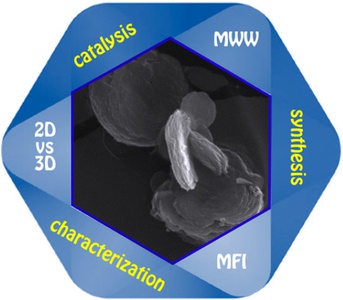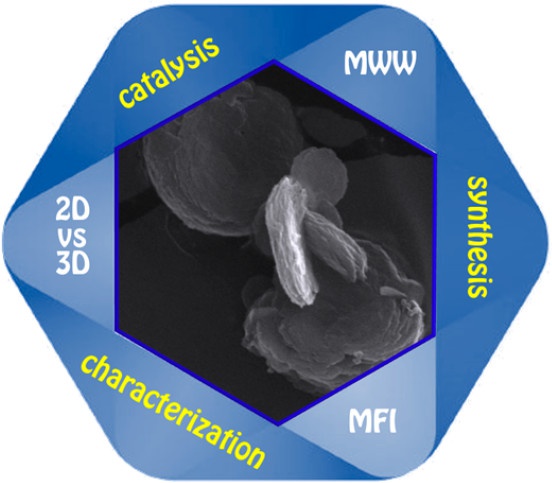MWW and MFI Frameworks as Model Layered Zeolites: Structures, Transformations, Properties, and Activity
ACS Catalysis, 11(4), 2366–2396. (2021) link
Shamzhy, M., Gil, B., Opanasenko, M., Roth, W. J., Čejka, J.
Porous solids containing internal pores with sizes ranging from angstroms to nanometers are highly useful and valuable in the catalysis, separation, and storage of molecules because these materials provide large surface areas and void spaces for the interaction and adsorption of molecules. In particular, two-dimensional zeolites (2D, sometimes called layered zeolites) with layer thickness of 2–3 nm (1–2 unit cells) have enabled the synthesis of advanced materials and their application in catalysis for the transformation of bulky substrates unable to enter zeolite pores, thereby substantially increasing the number of zeolite applications and modifications. Accordingly, this Review aims to highlight recent developments in the synthesis, characterization, and application of 2D zeolites, focusing on the two most important representatives, MWW and MFI.
MWW and MFI Frameworks as Model Layered Zeolites: Structures, Transformations, Properties, and Activity


